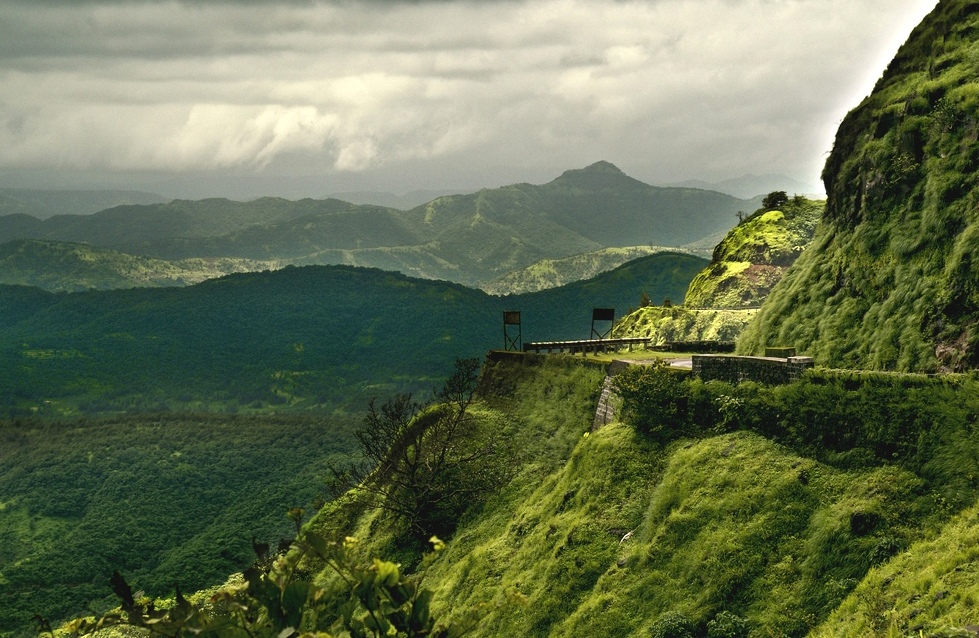
The western ghats are understood to be one of the oldest landmasses in the Indian subcontinent, much of its formation can be traced back to disintegration of the Gondwana supercontinent (a few hundred million years ago). The region continues to play a crucial role in maintaining the ecological health of Southern India and is home to a magnificent diversity of flora and fauna. The lush tropical forests, which constitute much of the Western Ghats provide ample opportunities for life forms to find food, habitat and to carve out a niche; even for the homo sapiens. Humans have inhabited parts of the western ghats for several millennia with the tangible evidence of hunter-gatherer activity from as old as 12,000 B.C. Traces of human activity in the region across historical time are spread throughout the region in the form of rock carvings, tools, and rock-cut temples. For the archeologist, these artifacts provide a glimpse into what lives and culture of bygone communities may have been. Another window into how life has progressed in the western ghats is through living heritage and traditions held by communities who lived here for generations, especially the tribes that can trace their ancestral roots to this land for millennia. This ancient relationship the communities here have developed with the landscape has allowed them to acquire a deep-rooted relationship with the ecosystem and biodiversity
The Human-Nature Connect: Co-evolved Ecosystems
In a major biodiversity survey taken up in the tropics in 2019, researchers made a peculiar discovery. Some parts of the forests they were studying exhibited more flora and attracted a wider number of life forms than areas adjacent to it. Further investigations revealed that these more active spots were human settlements (villages of native communities). These settlements had been left uninhabited for over a century yet the interactions they had with the landscape left it in a better, more thriving state. Life forms that co-inhabit the world provide humans a great deal of advantages; as food, for fuel and medicine. In a larger context it is non-human life forms that allow us to subsist on the Earth. Plants produce the oxygen we breathe and turn energy from the sun into food, soil microbes break down minerals that crops can absorb and the wide array of flora and fauna hold within them what humans require to nourish and heal themselves. In regions like the western ghats where sunlight, water and nutrition are ample, the number of living organisms and the functions they perform are numerous and diverse.
The Forests are Nature’s Biggest Medicine Cabinet
Communities that have lived here in the Western Ghats, starting as hunter-gatherers to organising semi-sedentary lives with farming have spent generations observing the landscape they are part of and identifying the value of its natural resources. This has allowed them to develop food systems and healing traditions to maintain their well being in the forests (which can be equally harsh, where pathogens and illnesses are numerous). The full depth of traditional knowledge is often left unknown until contact from mainstream society. The European expeditions during the colonial period for example added a plethora of therapeutic compounds into modern medicine (much of this knowledge taken from native communities without providing any credit). For the communities in the Western Ghats, the need to discover beneficial resources the landscapes provides is a matter of sustenance and developing the ability to protect the health of the ecosystem is integral to ensure that the necessary resources are generated. The relationship between ‘arogyapacha’(Trichopus Zeylanicus) and the Kani Tribe in southern Western Ghats is an example of this. The highly medicinal plant and the knowledge to extract its therapeutic values is imbibed into the culture and knowledge systems of this community. The Kani tribes have for generations engaged in the sustainable harvest and efficient utilization of the plant. When knowledge about the plant’s highly medicinal properties were made known to the world outside the communities of the Kani tribes, prompting large scale extraction by businesses to create nutritional supplements, the prevalence of the plant in the area dropped drastically (to the extent it is now considered threatened). When such relationships are disrupted it can have devastating impacts on both the communities and the biodiversity.
The Ongoing Ecological Crisis
The extraction of resources in the area is not just limited to economically valuable plants; quarrying, removal of soil to be used for construction, felling of trees for timber and poaching of wildlife has left severe damages in the Western Ghats. Overharvesting of natural resources in the region poses a major risk to both the ecosystem and the lives of communities. Further the change in landscape because of farming established by centuries of migration wherein indiginous forest cover was replaced by cash crops such as rubber, coffee and tea adds to the problem. Changes to the landscape and the terrain because of such activities effectively alter larger aspects of the area such as rainfall, changes the distribution of flora and fauna and increase the incidence of disaster (such as landslides). These alterations affect communities who have lived in the area for generations and co-evolved their culture to match the features of the Western Ghats disproportionately. The communities not only lose access to resources that allowed them to subsist in the area but also their culture and way of life. The loss of access to biodiversity imply larger herbal medicinal traditions and foraging techniques for food are lost, changes in climate patterns imply traditional calendars that inform farming and foraging cycles become redundant and the loss of overall ecosystem health imply the availability of natural resources become scarcer. This would inevitably result in the communities disbanding and having to move from their traditional land and way of living; with this the knowledge they have developed over generations also disintegrate.
The Inseparable Human-Nature Connection
In order to fully understand the link between the landscape and the human societies that live within its bounds, it is important to look at communities as ‘custodians’ and the landscape as something that informs and shapes their culture. There exists an intricate link, where the loss of cultural knowledge and tradition has an adverse impact on the ecosystem, and loss of natural resources puts stress on these communities who rely on it for sustenance.



